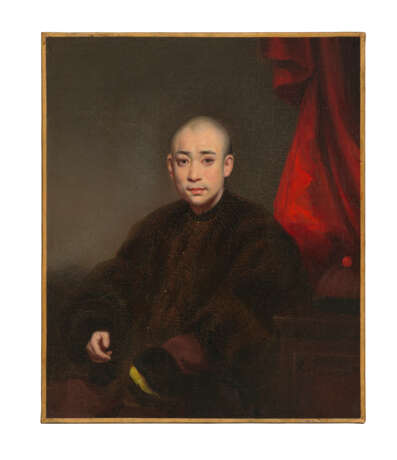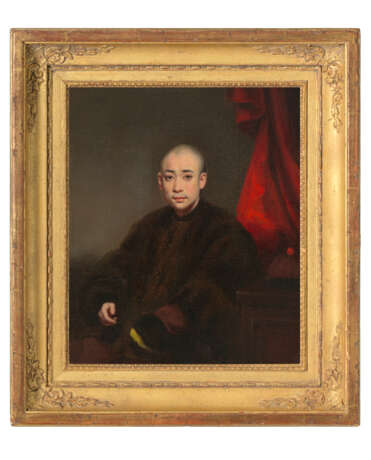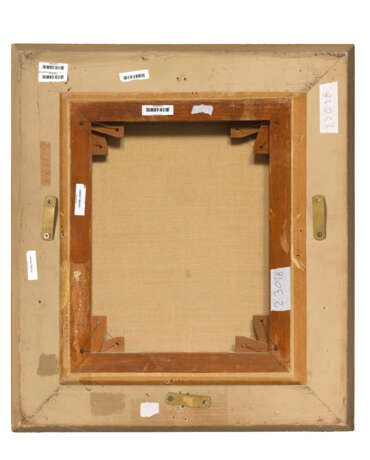ID 1336084
Lot 39 | LAM QUA (GUANGDONG 1801-1860)
Estimate value
€ 12 000 – 15 000
Portrait d'un homme chinois assis, en manteau d'hiver
huile sur toile
31,5 x 26,5 cm (12 7/16 x 10 7/16 in.)
Provenance
Collection particulière européenne ; leur vente [Property of a European Foundation], Sotheby's, New York, 26 octobre 1990, lot 82 (comme attribué à Lam Qua).
William J. Levy, Park Avenue, New York (selon le catalogue de vente de 2024, op. cit. infra).
Vente anonyme, Nadeau's Auction Gallery, Windsor, Connecticut, 27 avril 2024, lot 264.
Further details
LAM QUA (1801-1860), PORTRAIT OF A CHINESE MAN, SEATED, IN A WINTER COAT, OIL ON CANVAS
Lam Qua (1801-1860), whose full name was Guan Qiaochang, was one of the first Chinese artists to incorporate Western influences into his work, particularly through the use of oil painting, a relatively new technique in China at the time. Originally from Canton (Guangzhou), a port city open to international trade, he trained uder George Chinnery (1774-1852), a British painter based in Macao. Lam Qua's work, a subtle blend of traditional Chinese portraiture, codified and meticulous, and Western art, marked by a concern for realism and individuality, was much sought after by European merchants visiting Canton.
His ability to fuse European and Chinese elements is evident in this portrait. Dressed in a heavy winter coat, the sitter gazes directly out at the viewer. His headdress, a xiaomao, is visible to his left. Already popular at the end of the Ming dynasty (1368-1644), this hat became a distinctive attribute of the regime's dignitaries under the Qing dynasty (1644-1912). In including this sign of rank, Lam Qua followed the Confucian tradition of social symbolism by emphasising the social position of his model. He nevertheless moved away from the ideals of harmony, emotional restraint and serenity of the Chinese portrait, which was rather formal and stylised, to render the features and facial expressions of the model. Through his direct gaze, Lam Qua suggests the psychology of the sitter. The painter also places his portrait in a baroque European setting, with the dignitary posing in front of a red curtain. The reflection of light on this decorative element gives the composition a certain depth, contrasting with the neutral, sometimes abstract backgrounds of the Chinese tradition.
Lam Qua is also famous for his medical paintings, commissioned by the American physician and missionary Peter Parker (1804-1888) in the 1830s and 1840s. Parker, who ran an ophthalmology hospital in Canton, commissioned a series of portraits of patients suffering from tumours and bodily malformations. These highly anatomically accurate paintings were intended to document these rare cases, serving both as educational tools for Western doctors and as testimonials to the care Parker provided. These works, which combine a scientific eye with artistic sensitivity, depicting the sitters in a calm, dignified manner despite the visible deformities of their bodies.
| Artist: | Lam Qua (1801 - 1860) |
|---|---|
| Auction house category: | Paintings, Watercolors, Drawings, Paintings |
| Artist: | Lam Qua (1801 - 1860) |
|---|---|
| Auction house category: | Paintings, Watercolors, Drawings, Paintings |
| Address of auction |
CHRISTIE'S 8 King Street, St. James's SW1Y 6QT London United Kingdom | |
|---|---|---|
| Preview |
| |
| Phone | +44 (0)20 7839 9060 | |
| Buyer Premium | see on Website | |
| Conditions of purchase | Conditions of purchase |






